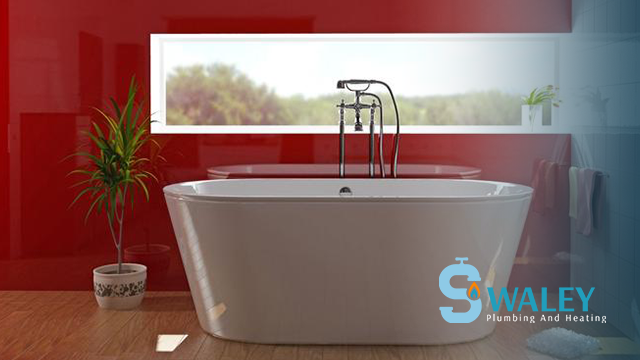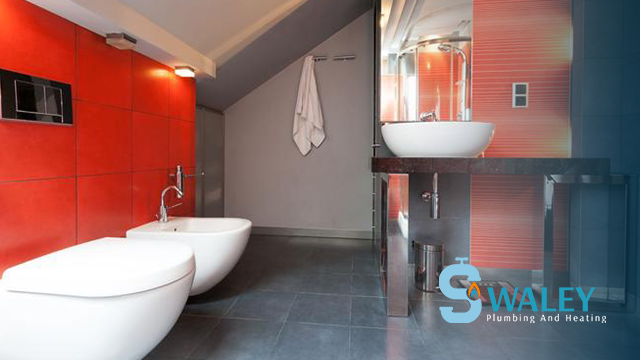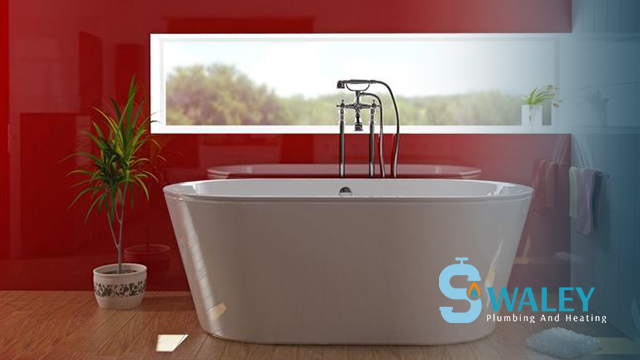Wet Room Tiles: Create a Modern and Stylish Look for Your Bathroom
A stunning bathroom is the epitome of relaxation and luxury in any home. One of the most popular trends in bathroom design is the incorporation of wet rooms. By removing the barriers of traditional shower enclosures and creating a seamless flow, wet rooms provide a modern and stylish look that instantly elevates the aesthetic of your bathroom. In this article, we will explore the world of wet room tiles, why they are a good choice when it comes to wet room flooring, and how they can help you achieve the bathroom of your dreams.
What are wet rooms?
Wet rooms are essentially open-concept shower areas that blend seamlessly with the rest of the bathroom. They feature a fully waterproofed floor, often with a gentle gradient to ensure efficient drainage, and tiled walls that extend to the ceiling. The absence of shower trays or enclosures gives a sense of spaciousness and allows for a versatile and customizable design.
Benefits of having a wet room in your bathroom
- Maximising space: Wet room installations are an excellent solution for small bathrooms or en-suites, as they make the most efficient use of limited space. Without the need for a separate shower cubicle, wet rooms create an open and airy atmosphere.
- Accessibility: Wet rooms offer easy accessibility, making them ideal for people with mobility issues or disabilities. The absence of steps or barriers eliminates tripping hazards and allows for wheelchair access.
- Design flexibility: Wet rooms provide endless design possibilities. Whether you prefer a sleek, minimalist look or a luxurious spa-like retreat, wet room tiles can be tailored to suit your personal style and preferences.
Why choose wet room tiles for your bathroom? Tiles are the ultimate choice for wet rooms due to their durability, water resistance, and aesthetic appeal. They are available in a wide range of materials, colours, and textures, allowing you to create a unique and stylish bathroom that reflects your individual taste. Let’s explore some of the types of wet room tiles and their advantages.
Types of Wet Room Tiles
Ceramic Tiles
Ceramic tiles are a popular choice for wet rooms, thanks to their versatility and affordability. They come in various sizes, styles, and patterns, allowing you to create a bespoke design that complements your bathroom decor. Ceramic tiles are also easy to clean and maintain, making them a practical choice for busy households.
Porcelain Tiles
If you’re looking for a more durable option, porcelain tiles are an excellent choice for wet rooms. They are highly resistant to water, stains, and scratches, making them perfect for high-moisture environments. Porcelain tiles offer a wide range of design options, including marble and wood effects, giving you the opportunity to achieve a luxurious look without the maintenance concerns associated with natural materials.
Natural Stone Tiles
For a touch of elegance and a timeless appeal, natural stone tiles are an exceptional choice for wet rooms. From luxurious marble to rustic slate, natural stone tiles add a sense of sophistication to any bathroom. Although they require sealing and regular maintenance, their unique beauty and durability make them worth the effort.
Mosaic Tiles
If you’re seeking a statement piece for your wet room, consider mosaic tiles. These small tiles, usually made of glass, porcelain, or natural stone, can be arranged to create intricate patterns and stunning visual effects. Mosaic tiles bring an artistic touch to your bathroom and are particularly popular for feature walls or shower niches.
Factors to Consider When Choosing Wet Room Tiles
Slip Resistance Safety should always be a top priority in wet rooms, and choosing slip-resistant tiles is crucial. Look for tiles with a textured surface or a high slip resistance rating. Non-slip tiles not only provide peace of mind but also add an extra layer of comfort when walking on wet surfaces.
Water Resistance
In wet rooms, where water is constantly present, opting for tiles with excellent water resistance is essential. Ensure that the tiles you choose have low water absorption rates, as this will prevent moisture from seeping into the tile and causing damage over time. Materials such as porcelain and ceramic are known for their superior water resistance, making them ideal choices for wet room tiles.
Maintenance and Durability
When selecting wet room tiles, consider their maintenance requirements and durability. Look for tiles that are easy to clean and require minimal upkeep. Porcelain and ceramic tiles are known for their low maintenance nature, requiring simple cleaning routines to keep them looking their best. Additionally, these tiles are highly durable and resistant to wear and tear, ensuring longevity in your wet room.
Aesthetics and Style
Your wet room tiles should not only be functional but also contribute to the overall aesthetic of your bathroom. Consider the style and design of your wet room tiles to create a visually appealing space. Choose tiles that complement the rest of your bathroom decor and create a cohesive look. Whether you prefer a sleek and contemporary design or a more traditional and rustic feel, there are wet room tiles available to suit every taste.
Installation Process of Wet Room Tiles
Preparing the Subfloor
Before installing wet room tiles, proper preparation of the subfloor is crucial. The subfloor should be level, clean, and free from any cracks or imperfections. Ensure that it is adequately waterproofed to prevent any water damage. This step is essential to create a solid foundation for your wet room tiles and ensure their longevity.
Waterproofing the Wet Room
To create a watertight environment in your wet room, proper waterproofing is necessary. This involves applying waterproofing membranes or coatings to the floor and walls of the wet room area. This protective layer ensures that any water that penetrates through the tiles is effectively contained, preventing water damage to the underlying structure.
Tile Installation Techniques
There are various techniques for installing wet room tiles, depending on the tile material and design preferences. The most common methods include adhesive bonding, mortar bed installation, and floating systems. We adopt the optimum technique dependent on the job.
Maintenance Tips for Wet Room Tiles
Cleaning and Stain Removal
To maintain the beauty of your wet room tiles, regular cleaning is essential. Use mild, non-abrasive cleaners and avoid harsh chemicals that can damage the tiles. Wipe away any spills or soap residue promptly to prevent staining. If stubborn stains occur, use specific tile stain removers or natural remedies like a mixture of baking soda and water to gently remove them.
Preventing Mould and Mildew
In wet environments, mould and mildew can be a common issue. To prevent their growth, ensure proper ventilation in your wet room. Use exhaust fans or open windows after showers to allow the moisture to escape. Additionally, regularly inspect the grout lines and caulking for any signs of mould or mildew and address them promptly with appropriate cleaning products.
Regular Maintenance
Routine Establishing a regular maintenance routine will help keep your tiles in optimal condition. This includes regular cleaning, inspection of grout lines, resealing if necessary, and addressing any repairs or maintenance needs promptly. By staying proactive, you can prevent potential issues and prolong the lifespan of your wet room tiles.
Speak to our expert team today for more information.




